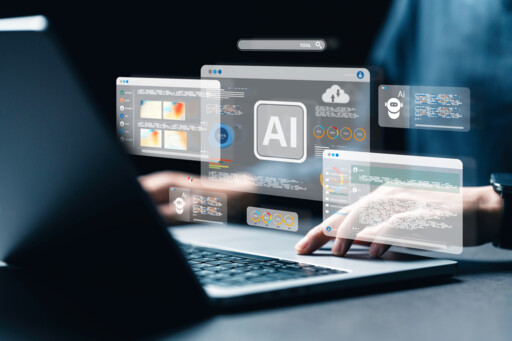


Social science experimental paradigms advancing in step with the times

In the 21st century, driven by emerging technologies and new research tools, social science experimentation has progressed from behavioral to computational and, most recently, generative paradigms. Photo: TUCHONG
Prior to the 21st century, experimental research in social sciences was heavily influenced by natural science paradigms, emphasizing variable control, empirical analysis, and linear causal relationships. Laboratory control, field surveys, and questionnaires served as its primary methods. In the current era of “digital-intelligent integration,” social science experimentation is evolving toward a highly simulated, systematized, and complex framework.
Four stages in the evolution of experimental paradigms
From “observing society” to “intervening in society”: Early social experimental studies were largely grounded in positivist and empirical observation. From the late 19th century to the mid-20th century, surveys and statistical comparisons were used to explore the underlying patterns of social phenomena. After the 1940s, under the influence of behaviorism, social science experiments began shifting towards “field experiments,” which emphasized the authenticity and ecological validity of research subjects but also faced challenges of operational complexity and ethical concerns.
From “passive observation” to “simulated manipulation”: In the mid-to-late 20th century, with the rapid growth of experimental economics and behavioral sciences, researchers began simulating real-world scenarios in controlled laboratory settings, observing the behavior of individuals or groups under specific information structures and reward mechanisms. By the end of the 20th century, the widespread adoption of information technology gave rise to large-scale, digital, and multi-center collaborative social science behavioral experiments.
From “behavioral experiments” to “computational experiments”: Entering the 21st century, social science experimentation came to be characterized by data-driven approaches, network analysis, and algorithmic modeling. Researchers no longer relied solely on manually designed experimental conditions; instead, they use “naturally occurring” digital traces—such as those generated by social media, sensor devices, and transaction data—to conduct social structure simulations at multiple scales and policy sensitivity tests.
From “computational society” to “generative society”: As big data technology, artificial intelligence, and complex systems science increasingly mature, researchers have turned to agent-based models in which agents interact according to predefined rules and environments, simulating complex real-world behaviors and predicting the evolutionary trajectories of group phenomena. With the advent of large language models, the scope of social experiment variables has expanded beyond behavior to encompass cognition, emotion, values, and trust.
Characteristics of the evolution
From qualitative to computational: In the era of empiricism, social science research primarily relied on fieldwork and humanistic descriptions, emphasizing observation and interpretation rather than prediction. As behavioral and field experiments advanced, quantitative methods gradually became dominant. Individual behaviors, interaction rules, and social feedback processes were encoded into formal models and algorithmic structures, marking a new phase of generative social science primarily aimed at explaining how social phenomena are “constructed.”
From linear causality to complex emergence: Traditional experimental paradigms, centered on linear causal relationships between variables, proved inadequate for explaining the nonlinear, multi-agent interactive feedback mechanisms common in social phenomena. To capture complex social behaviors more effectively, game theory, information transmission models, and multi-agent collaboration mechanisms, and agent-based simulations were introduced into behavioral experiments.
From individual perspective to multi-level modeling: Early social science experiments centered on analyzing individual psychology and behavioral responses, with limited capacity to build models of collective institutions. With advances in modeling techniques, researchers developed multi-level analytical frameworks of “individual-organization-institution” to reproduce the social interactions of real-world groups.
Future trends in social science experiments
Methodological integration: Increasingly, no single paradigm can adequately capture the “multiple causes and effects, multi-layered nesting” inherent in social systems. Future experimental research in social sciences is likely to move toward multi-paradigm and modular integration, combining the descriptive strengths of traditional approaches with the predictive and deductive capabilities of emerging ones.
Technological integration: Social experiments can now be digitally replicated in real-world contexts through the deep integration of intelligent agents, big data, and the Internet of Things (IoT). Using agent-based technologies, researchers can design virtual entities equipped with cognitive models, decision-making rules, and learning abilities. Big data platforms provide multi-source data inputs, while IoT sensors, mobile terminals, and embedded devices enable real-time collection and remote manipulation of behaviors, environments, and interactions.
Organizational integration: Social science experimentation is gradually shifting to a systems engineering project. No single discipline can manage the full chain of tasks—designing experiments, modeling, data operation and maintenance, and policy feedback. It will therefore be essential to build intelligent collaborative platforms that link academic research institutions, data platform enterprises, policymaking agencies, and public technological infrastructure.
Qian Minghui is a professor from the School of Information Resource Management at Renmin University of China.
Editor:Yu Hui
Copyright©2023 CSSN All Rights Reserved